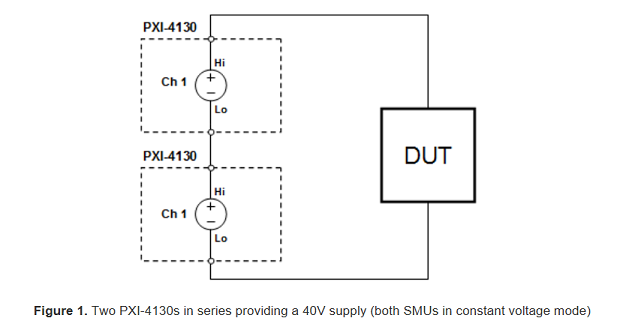Solution
It is possible to combine two SMU channels in series for higher voltage, however, this may cause performance issues in certain situations, and the instrument specifications are not guaranteed. Connecting channels in series also adds complexity to wiring and programming, but may make sense in situations where dynamic performance requirements are not very strict and you: already have the hardware, need the ability to reconfigure voltage for different tests, or single channel alternatives are not available.
- No more than 2 channels combined (usually there’s a better alternative > 2 channels).
- Do not exceed the isolation voltage of the instrument.

Even when following the above recommendations, combining channels can still present issues with noise, stability, and outputting the proper voltage/current with the required accuracy.